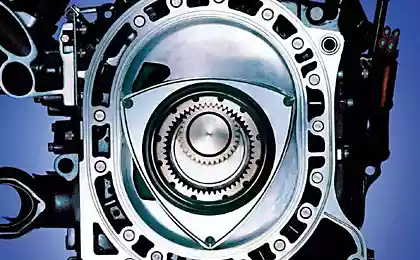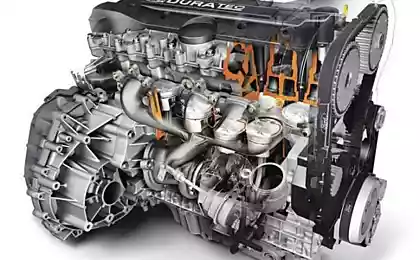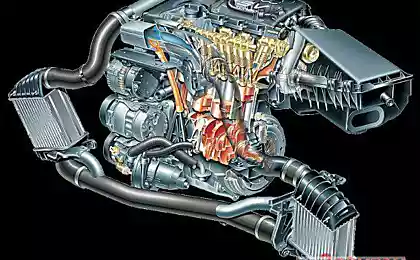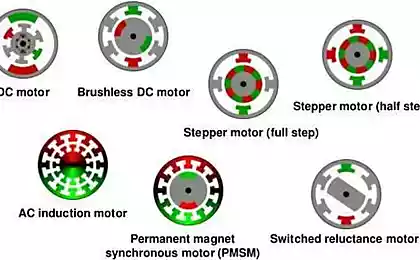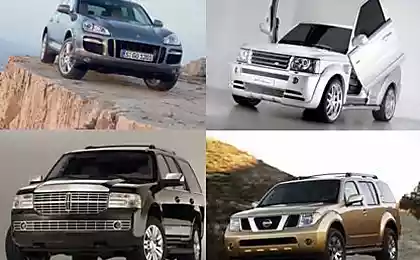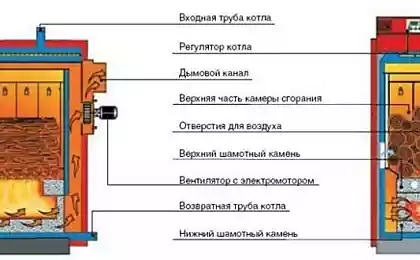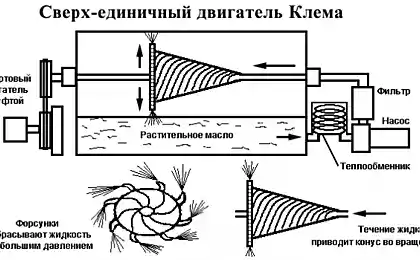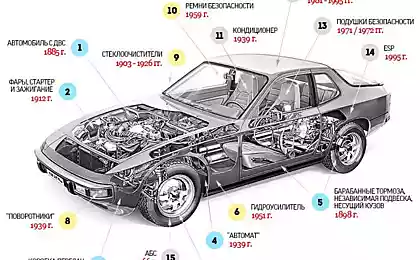540
Ban internal combustion engines: all the details
At the Paris world climate conference COP21, which holds the UN, suddenly sounded a loud statement: the UK, Germany, the Netherlands and Norway, and several American States after 2050 is ready to "ban the use and sale of car fuel fuel". So the piston internal combustion engine, which faithfully served for two centuries in a row, set the date of death.
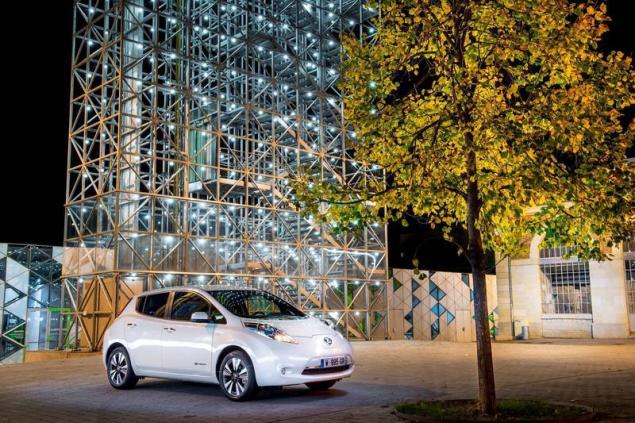
Then what will drive humanity? The future transport is electric cars, which are still surrounded by many myths. We have collected the most popular speculations concerning electrical transport, and interviewing experts at COP21, tried to figure out what is true and what is not. And as a partner of ecosummit is the company Nissan, as an example, in many cases is the electro hatchback costs Leaf emerging from the update. For electric cars, not enough electricity, New generating capacity is not required. For example, in the United States, according to the calculations of an independent EIA Agency, if the entire fleet of 250 million cars to convert to electric, the night (during the so-called failure load) of energy, enough to charge 79% of cars. And during the day? The daily decline in consumption also exists: the total "free energy" will be enough for those 79% of cars, however, it is important that the machine came on it someday, and need a watch. This problem is solved by a smartphone app that tells the best time for "refueling" with electricity.
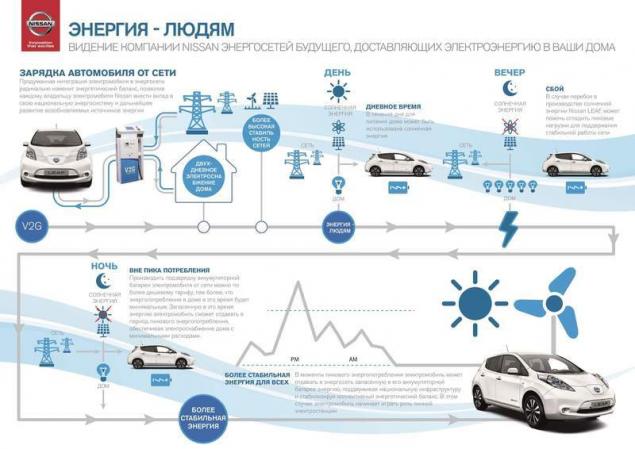
In Europe is another problem. In Denmark, Norway and many other countries with developed alternative energy, the problem is not the deficit, and the excess generation! So a significant part of the European fleet is already profitable for you to convert to electric. Moreover, because of energy-saving technology electricity consumption globally is decreasing, while power remains in the future these "free watts" and will recharge the batteries of electric vehicles.
Electric vehicles charged with "forever"
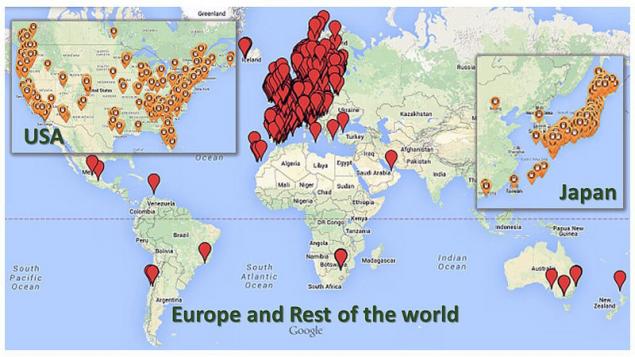
According to estimates of SAP, a manufacturer of industrial software, the optimal number of charging stations of all types ("slow" and "fast") and electric vehicle fleet must be at least 2.5:1. As for the CHAdeMO stations (marked on map), around the world, they are now about 9 800: 5 500 in Japan, 2 900 in Europe, the United States In the so-called "slow charge" Nissan Leaf battery "filled" for 4-8 hours (depending on amperage). But "quick charge" from the station DC through connector CHAdeMO allows you to "fill" the battery to 80% in just half an hour, and in the short term, the charging time will be reduced to 15 minutes. Thus, the duration of "refuelling" directly depends on infrastructure, so the number of charging stations worldwide is constantly growing and in just 4 years has grown from 150 to 9800 units.
Electricity — "dirty" source of energy In the world 60% of all electricity produced in thermal power plants — to obtain "clean" electricity, you need to burn dirty coal, oil or gas... But! First, the translation of the vehicle's electric range will have a place of localization of the harmful effects on the environment of the city will be able to breathe clean air, and all emissions will focus on the areas around power plants. Second, even the most archaic CHP emit (in terms of kilometer) much less carbon dioxide than internal combustion engine: the CHAdeMO Association says that "the circle" the electric car is three times (!) environmentally friendly.

However, even assuming that Western environmentalists engaged by the authorities, and wishful thinking, there is one difficult contestable argument. Energy liquid fuels supply the same companies that the motorists but while a kilometer of the electric vehicle in practice is at least three times less than a comparable power diesel machine (will talk about this separately), and therefore emits much less nasty. Lithium-ion batteries are too short-lived Start from afar. In many countries, the electricity tariffs depend on the time of day, so it makes sense to buy energy at night and use a day. For energy storage and will serve to run down the batteries! Thus, the company Nissan, with the support of Eaton introduces product "Vehicle-to-Grid" — a buffer station that extend battery life up to 25 years: 10-12 years the battery is on the electric car, losing 20% of its capacity, and the remaining time working as a buffer.
Electricity is unprofitable to Take a couple of hatchbacks brand Nissan — Leaf electric (109 HP) and gasoline "Tiida" (117 HP). In the combined cycle for the methodology of NEDC electric car consumes 15 kWh/100 km, while the most expensive Moscow the rate of 5.58 ruble per "kilowatt" the cost of kilometre of run will make 84 kopecks. For petrol cars with an average fuel consumption of 6.4 l/100 km and the price of a liter "ninety-fifth" 36.78 rubles kilometer will cost as much as a 2.35! The net benefit? Alas, the electric cars are quite expensive: in Germany for Leaf asking for 23 thousand Euro, and the petrol Pulsar (similar to our "Tiida") can be bought for 18 thousand.
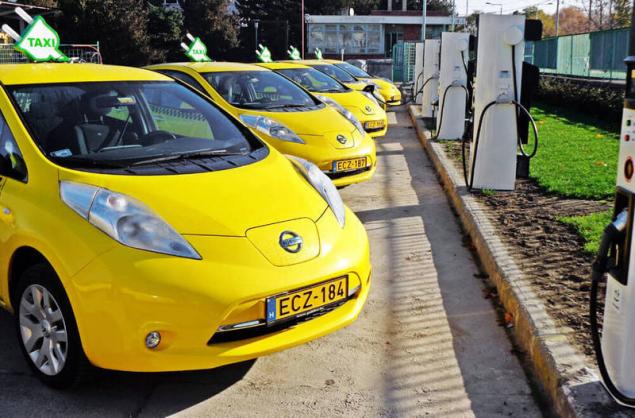
In many countries, the difference allows for different kinds of subsidies — for example, in France, if you rent a diesel car over 14 years of age, can receive 10 000 Euro discount for electric car. But! As experts predict, if environmental regulations continue to become stricter by the year 2020 petrol and diesel cars will cost the same as "trains". By the way, is the most expensive component of an electric vehicle traction battery is: for every "kilowatt" her capacity to pay 150-200 Euro, so the "battery -" basic version "Bodice" to 24 kWh is about 4 500-5 000 euros. Trucks will not be able to go to electric
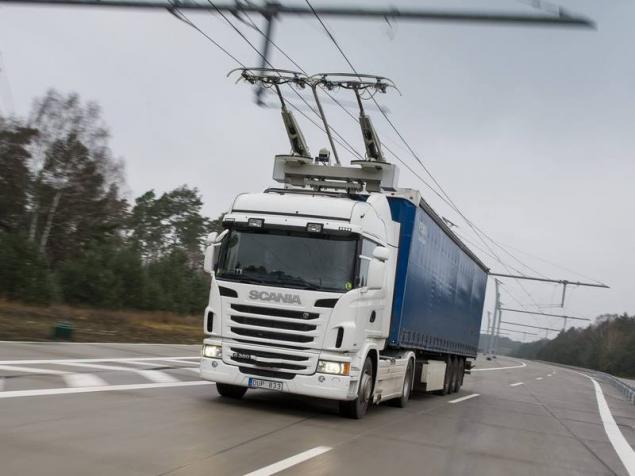
Scania begins testing electrogrooving, which are a hybrid of train and bus: a behind the cab mounted pantograph that will power not only the motor but also the battery pack outside elektrifizierung plot train can move on stored battery energy, and then switch to diesel engine Main tractors, a large part of life which takes place at cruising speeds, the transition to batteries is not threatened: pure electric road train will cost 150-200 thousand euros more expensive than conventional diesel, and the range to 12 tonne class with current technologies will be... no more than 100 km But transfer commercial vehicles to electric! While the most suitable idea engineers seem to be trolley cars — trucks equipped with pantographs so that the machine could be powered trolley, stretched wire over the road.
Electric cars are not suitable for long trips and cold climates In the world, 90% of drivers every day passing no more than 90 km! But you must admit: the opportunity to drive 300 km should be. Here only the efficiency of the electric drivetrain, which is a bunch of "battery-electric", with the growth rate falls at 90 km/h Leaf consumes up to 20 kW·h... Problem solved. First, there are already technologies to increase the capacity of the battery at a constant size. Second, the advent stations, "fast-charging" eliminates a modest reserve.

As for the cold, then electric cars can ride at a temperature of -30°C. However, included in the maximum of the "stove" will consume 5-6 kWh, dramatically reducing the "range" of the machine... However, we just have to change your habits to heat or cool the interior will need to travel until the machine is powered from the mains, then energy on the "climate" will need much less, only to maintain the temperature. The second flaw — when the "minus" lithium-ion battery less readily gives the energy corrected with the help of heated battery. published
P. S. And remember, only by changing their consumption — together we change the world! ©
Join us in Facebook , Vkontakte, Odnoklassniki
Source: avtoblog.org.ua/news/zapret-na-dvigateli-vnutrennego-sgoranija-vse-podrobnosti/page/4

Then what will drive humanity? The future transport is electric cars, which are still surrounded by many myths. We have collected the most popular speculations concerning electrical transport, and interviewing experts at COP21, tried to figure out what is true and what is not. And as a partner of ecosummit is the company Nissan, as an example, in many cases is the electro hatchback costs Leaf emerging from the update. For electric cars, not enough electricity, New generating capacity is not required. For example, in the United States, according to the calculations of an independent EIA Agency, if the entire fleet of 250 million cars to convert to electric, the night (during the so-called failure load) of energy, enough to charge 79% of cars. And during the day? The daily decline in consumption also exists: the total "free energy" will be enough for those 79% of cars, however, it is important that the machine came on it someday, and need a watch. This problem is solved by a smartphone app that tells the best time for "refueling" with electricity.

In Europe is another problem. In Denmark, Norway and many other countries with developed alternative energy, the problem is not the deficit, and the excess generation! So a significant part of the European fleet is already profitable for you to convert to electric. Moreover, because of energy-saving technology electricity consumption globally is decreasing, while power remains in the future these "free watts" and will recharge the batteries of electric vehicles.
Electric vehicles charged with "forever"

According to estimates of SAP, a manufacturer of industrial software, the optimal number of charging stations of all types ("slow" and "fast") and electric vehicle fleet must be at least 2.5:1. As for the CHAdeMO stations (marked on map), around the world, they are now about 9 800: 5 500 in Japan, 2 900 in Europe, the United States In the so-called "slow charge" Nissan Leaf battery "filled" for 4-8 hours (depending on amperage). But "quick charge" from the station DC through connector CHAdeMO allows you to "fill" the battery to 80% in just half an hour, and in the short term, the charging time will be reduced to 15 minutes. Thus, the duration of "refuelling" directly depends on infrastructure, so the number of charging stations worldwide is constantly growing and in just 4 years has grown from 150 to 9800 units.
Electricity — "dirty" source of energy In the world 60% of all electricity produced in thermal power plants — to obtain "clean" electricity, you need to burn dirty coal, oil or gas... But! First, the translation of the vehicle's electric range will have a place of localization of the harmful effects on the environment of the city will be able to breathe clean air, and all emissions will focus on the areas around power plants. Second, even the most archaic CHP emit (in terms of kilometer) much less carbon dioxide than internal combustion engine: the CHAdeMO Association says that "the circle" the electric car is three times (!) environmentally friendly.

However, even assuming that Western environmentalists engaged by the authorities, and wishful thinking, there is one difficult contestable argument. Energy liquid fuels supply the same companies that the motorists but while a kilometer of the electric vehicle in practice is at least three times less than a comparable power diesel machine (will talk about this separately), and therefore emits much less nasty. Lithium-ion batteries are too short-lived Start from afar. In many countries, the electricity tariffs depend on the time of day, so it makes sense to buy energy at night and use a day. For energy storage and will serve to run down the batteries! Thus, the company Nissan, with the support of Eaton introduces product "Vehicle-to-Grid" — a buffer station that extend battery life up to 25 years: 10-12 years the battery is on the electric car, losing 20% of its capacity, and the remaining time working as a buffer.
Electricity is unprofitable to Take a couple of hatchbacks brand Nissan — Leaf electric (109 HP) and gasoline "Tiida" (117 HP). In the combined cycle for the methodology of NEDC electric car consumes 15 kWh/100 km, while the most expensive Moscow the rate of 5.58 ruble per "kilowatt" the cost of kilometre of run will make 84 kopecks. For petrol cars with an average fuel consumption of 6.4 l/100 km and the price of a liter "ninety-fifth" 36.78 rubles kilometer will cost as much as a 2.35! The net benefit? Alas, the electric cars are quite expensive: in Germany for Leaf asking for 23 thousand Euro, and the petrol Pulsar (similar to our "Tiida") can be bought for 18 thousand.

In many countries, the difference allows for different kinds of subsidies — for example, in France, if you rent a diesel car over 14 years of age, can receive 10 000 Euro discount for electric car. But! As experts predict, if environmental regulations continue to become stricter by the year 2020 petrol and diesel cars will cost the same as "trains". By the way, is the most expensive component of an electric vehicle traction battery is: for every "kilowatt" her capacity to pay 150-200 Euro, so the "battery -" basic version "Bodice" to 24 kWh is about 4 500-5 000 euros. Trucks will not be able to go to electric

Scania begins testing electrogrooving, which are a hybrid of train and bus: a behind the cab mounted pantograph that will power not only the motor but also the battery pack outside elektrifizierung plot train can move on stored battery energy, and then switch to diesel engine Main tractors, a large part of life which takes place at cruising speeds, the transition to batteries is not threatened: pure electric road train will cost 150-200 thousand euros more expensive than conventional diesel, and the range to 12 tonne class with current technologies will be... no more than 100 km But transfer commercial vehicles to electric! While the most suitable idea engineers seem to be trolley cars — trucks equipped with pantographs so that the machine could be powered trolley, stretched wire over the road.
Electric cars are not suitable for long trips and cold climates In the world, 90% of drivers every day passing no more than 90 km! But you must admit: the opportunity to drive 300 km should be. Here only the efficiency of the electric drivetrain, which is a bunch of "battery-electric", with the growth rate falls at 90 km/h Leaf consumes up to 20 kW·h... Problem solved. First, there are already technologies to increase the capacity of the battery at a constant size. Second, the advent stations, "fast-charging" eliminates a modest reserve.

As for the cold, then electric cars can ride at a temperature of -30°C. However, included in the maximum of the "stove" will consume 5-6 kWh, dramatically reducing the "range" of the machine... However, we just have to change your habits to heat or cool the interior will need to travel until the machine is powered from the mains, then energy on the "climate" will need much less, only to maintain the temperature. The second flaw — when the "minus" lithium-ion battery less readily gives the energy corrected with the help of heated battery. published
P. S. And remember, only by changing their consumption — together we change the world! ©
Join us in Facebook , Vkontakte, Odnoklassniki
Source: avtoblog.org.ua/news/zapret-na-dvigateli-vnutrennego-sgoranija-vse-podrobnosti/page/4
Card of the day— MOTIVATION
Scientists have developed a computer chip that uses a million times less energy




